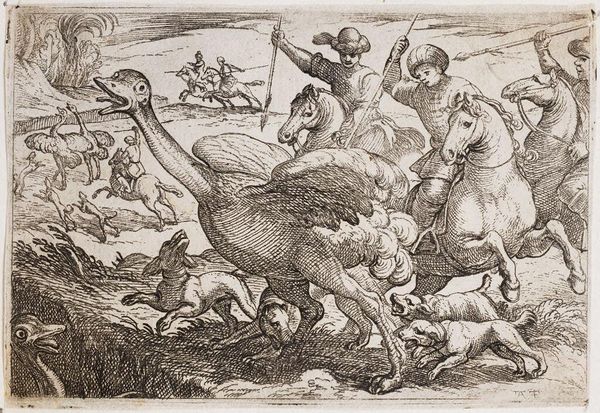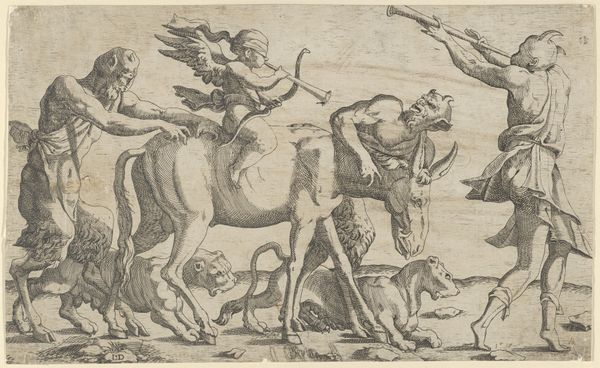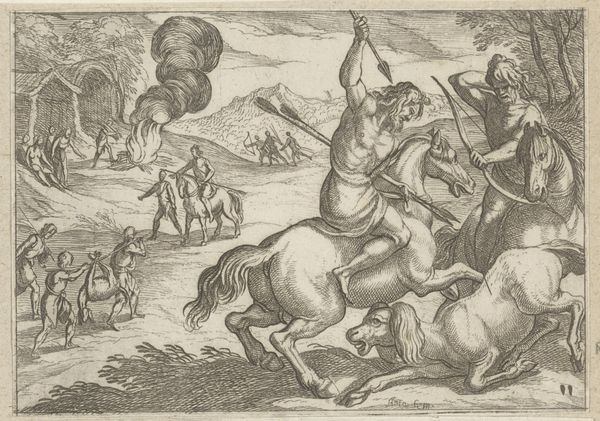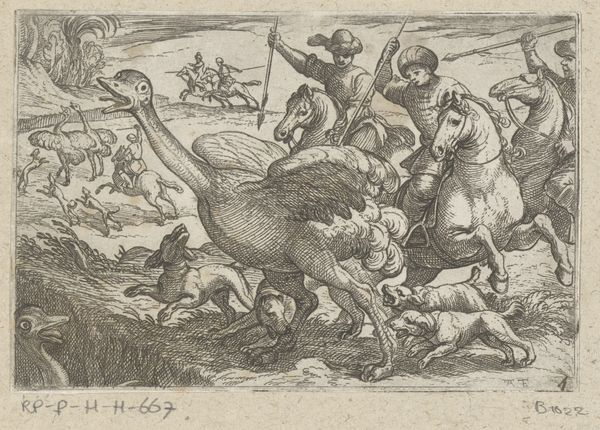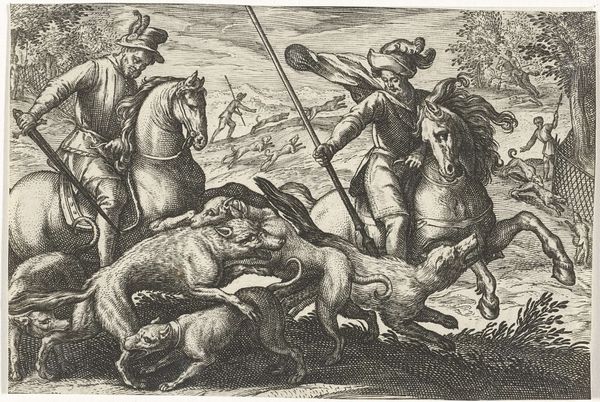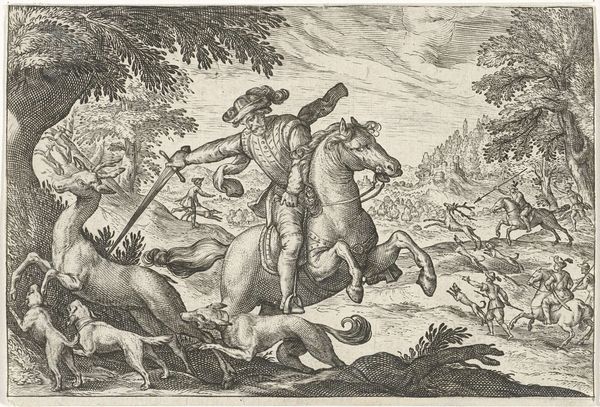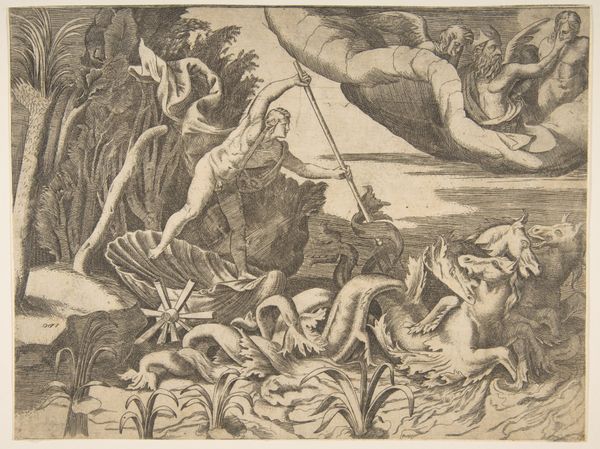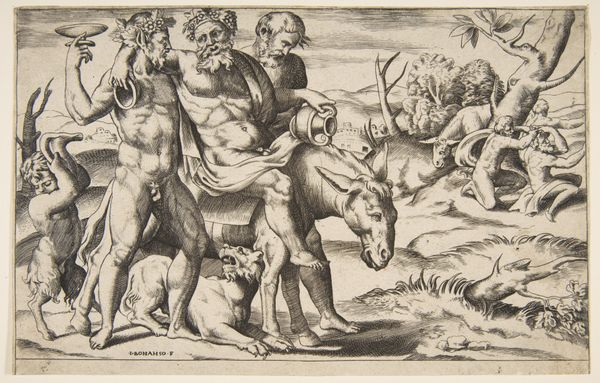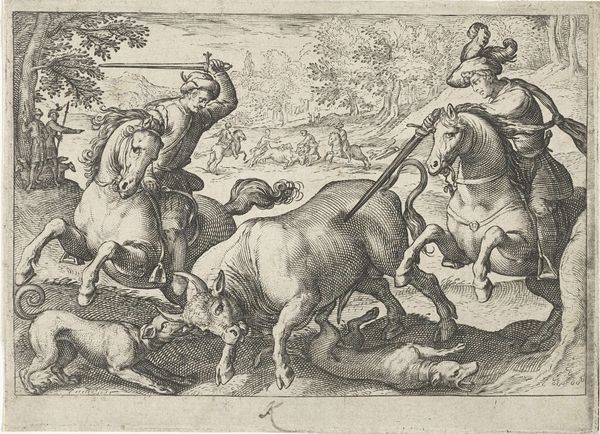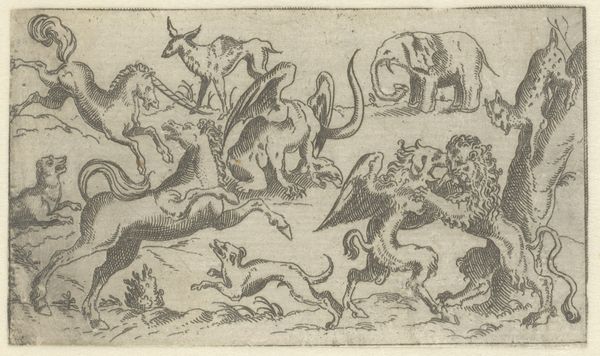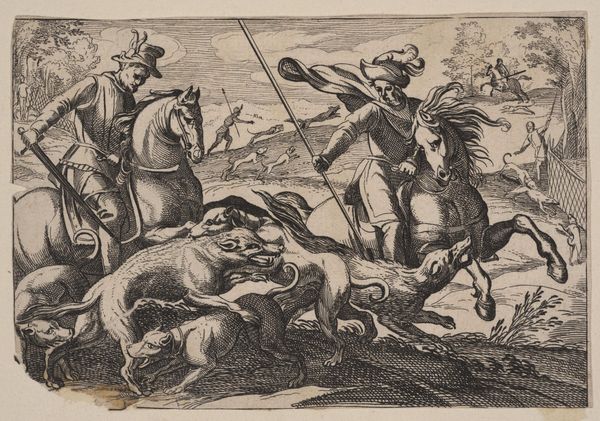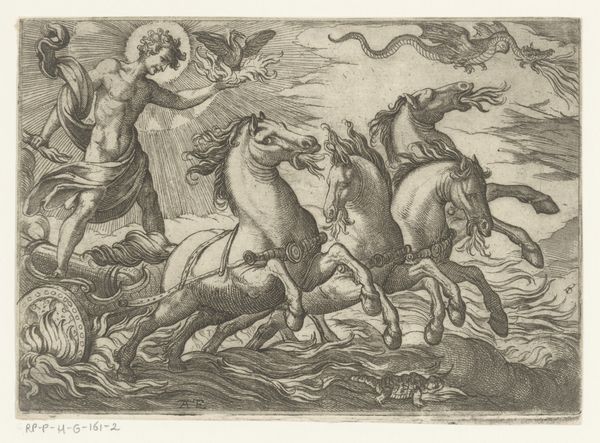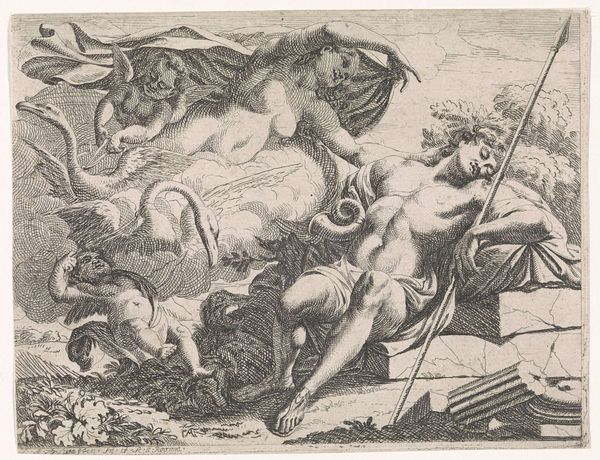
print, engraving
#
pen drawing
#
dutch-golden-age
# print
#
landscape
#
figuration
#
line
#
genre-painting
#
engraving
Dimensions: height 83 mm, width 120 mm
Copyright: Rijks Museum: Open Domain
Curator: The energy in this piece is immediately striking, isn't it? What do you make of the composition? Editor: Chaotic, bordering on frantic! The dense lines make it hard to distinguish forms initially. You see these men on horseback, a pack of dogs, and…ostriches? It feels a bit like visual overload. Curator: Indeed. We're looking at "Landscape with Ostrich Hunt" by Egbert Jansz, created in 1598. It's an engraving, showcasing a rather unique form of the popular genre of the time. Editor: An engraving, so all those dense lines were etched by hand. It's fascinating to consider the labor involved in creating this scene, replicating this vision into reproducible forms of art. The process becomes incredibly significant here; what materials were they working with, what was the cost? Curator: Absolutely. The medium certainly impacted its accessibility. This would have circulated amongst a particular segment of society. Note, too, how the ostriches, as exotic animals, suggest connections to wider colonial ventures and trade at the time. Editor: The ostrich themselves seem central to the piece. Consider the details etched into their bodies and wings. Is this level of material focus drawing away from some other aspects of this piece's meaning? Curator: One might argue that Jansz' focus isn't only the realistic depiction but rather the symbolic meaning that such hunts held, perhaps connected to status and exotic trade relations of the time, but also perhaps it functions more simply as an exercise in imagination and fantasy of lands and goods abroad. Editor: A fantasy built on labor, though, we can't forget the hand behind this print or the network that spread this print. So it is indeed not just the "fantastic exoticism" of ostriches or hunting, but a social, material construction of this image. Curator: Yes, examining the broader historical context gives this frantic hunt greater resonance than initially meets the eye. It brings up a more profound social picture than a mere hunt, with elements of colonialism and commerce mixing here. Editor: And examining the piece as an engraved object leads one to further understand what an image could *mean* in that time, when it's also understood and sold and held in your own two hands. Thanks for shedding some new light! Curator: And thank you. It’s this constant dialogue, between object, history, and the networks that made it all possible, that keeps this field alive.
Comments
No comments
Be the first to comment and join the conversation on the ultimate creative platform.
